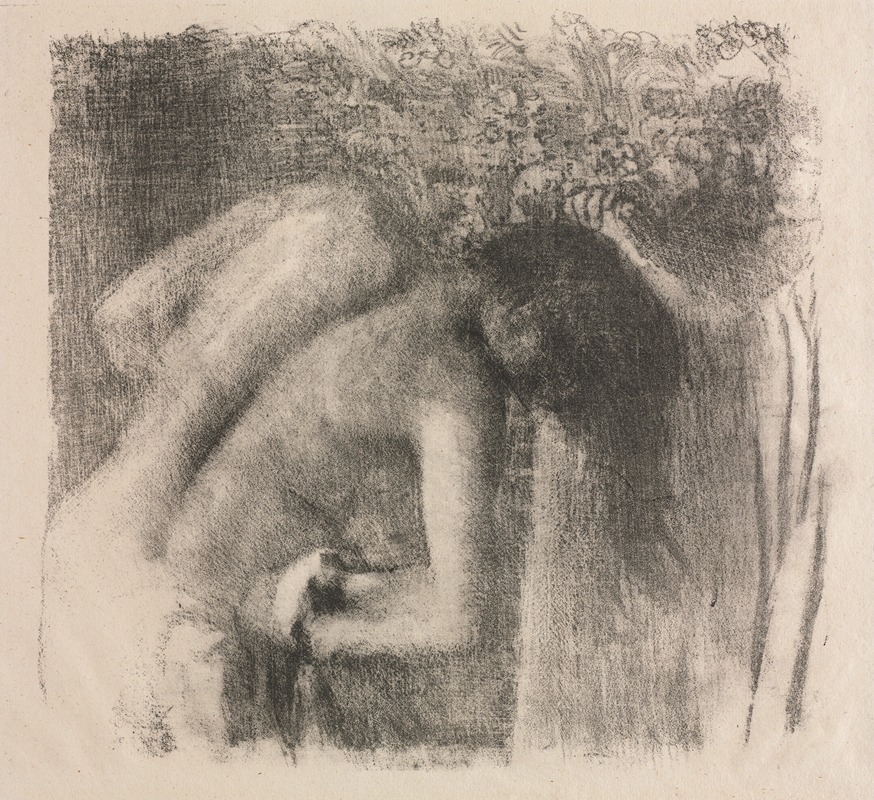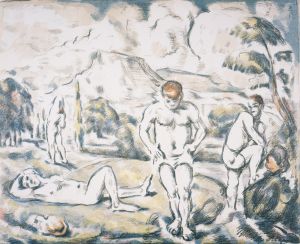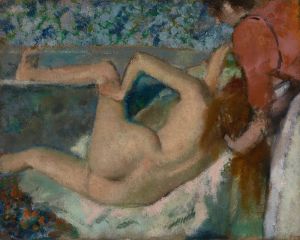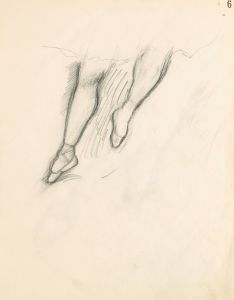
After the Bath
A hand-painted replica of Edgar Degas’s masterpiece After the Bath, meticulously crafted by professional artists to capture the true essence of the original. Each piece is created with museum-quality canvas and rare mineral pigments, carefully painted by experienced artists with delicate brushstrokes and rich, layered colors to perfectly recreate the texture of the original artwork. Unlike machine-printed reproductions, this hand-painted version brings the painting to life, infused with the artist’s emotions and skill in every stroke. Whether for personal collection or home decoration, it instantly elevates the artistic atmosphere of any space.
"After the Bath" is a series of paintings and pastels by the renowned French artist Edgar Degas, created during the late 19th century. Degas, a prominent figure in the Impressionist movement, is best known for his depictions of dancers, women at their toilette, and scenes of everyday life. His works often explore the human form, movement, and the effects of light and color.
The "After the Bath" series exemplifies Degas's fascination with the intimate and private moments of women, capturing them in various stages of bathing and grooming. These works are characterized by their candidness and the artist's ability to convey a sense of spontaneity and naturalism. Degas's approach to these subjects was innovative for his time, as he often depicted women in unguarded, informal poses, which was a departure from the more traditional, idealized representations of the female nude.
Degas employed a variety of media in the "After the Bath" series, including oil paints, pastels, and charcoal. His use of pastels, in particular, allowed him to achieve a soft, delicate quality that enhanced the intimate nature of the scenes. The artist's technique involved layering colors and using bold, expressive strokes to create texture and depth. This method enabled him to capture the play of light on the skin and the subtle nuances of the human form.
One of the notable aspects of Degas's work is his unconventional compositions. In the "After the Bath" series, he often cropped figures in unexpected ways, drawing inspiration from Japanese prints and photography. This approach created a sense of immediacy and movement, inviting viewers to engage with the scene as if they were observing a fleeting moment.
Degas's choice of subject matter and his depiction of women in private settings were both celebrated and critiqued during his lifetime. Some contemporaries praised his ability to capture the essence of modern life, while others viewed his focus on the female nude as voyeuristic. Despite these differing opinions, Degas's work has had a lasting impact on the art world, influencing subsequent generations of artists.
The "After the Bath" series is housed in various museums and private collections around the world, including the Musée d'Orsay in Paris and the National Gallery in London. These works continue to be studied and admired for their technical mastery and their insight into the social and cultural dynamics of 19th-century France.
Degas's exploration of the theme of bathing reflects his broader interest in the human condition and the complexities of modern life. Through his innovative techniques and keen observational skills, he was able to capture the beauty and vulnerability of his subjects, leaving a lasting legacy in the world of art.

















